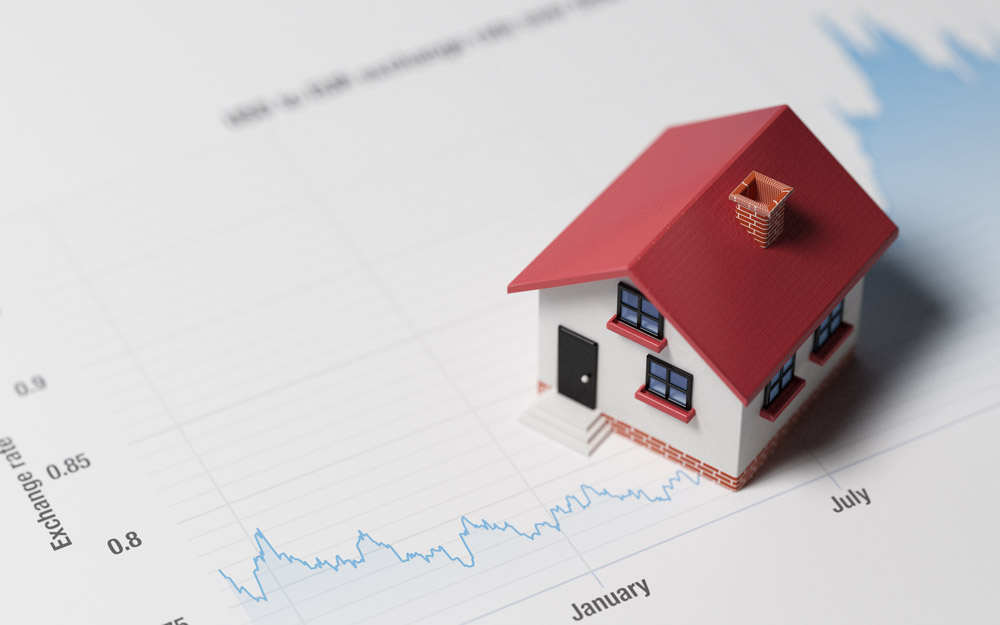The Federal Reserve has raised interest rates five times this year alone. Today’s interest rates of 3% to 3.25% are the highest since 2008 and the first time since the 1980s that they’ve risen so much in the span of one year. The Fed’s rationale for increasing rates? To curb inflation. However, nearly everywhere you look, prices are still going up, and even more interest rate hikes are on the way.
But what do the Fed’s interest rates have to do with inflation? And how will higher interest rates affect your finances? Read on to find out what happens when the Fed raises interest rates, and gain strategies to account for additional increases.
Why does the Fed increase interest rates?
When inflation drives prices up, the Fed often steps in to reduce spending. To discourage consumers and businesses from spending, the Fed raises interest rates. The Fed’s interest rates influence borrowing costs, so when interest rates rise, credit gets more expensive. The theory is that as spending slows, demand decreases as well. Ultimately, the reason the Fed raises interest rates is to slow down economic growth – and by extension, curb inflation.
What happens when the Fed increases interest rates?
Marylanders are already facing increased rates on auto insurance premiums, energy bills and more, but they could face increases on credit card and loan payments too. So how will rising interest rates impact your finances? And what can you do to stretch your budget as much as possible? We break down how the Fed’s interest rates impact four key financial areas and steps you can take to maximize your budget.
The impact of Fed interest rates on…
Credit Card Annual Percentage Rates (APR)
Federal interest rates have a direct impact on credit card APR. It’s possible that you’ve already noticed an increase in APR on your credit cards since the Fed has already increased interest rates five times this year. Credit card APR increases at generally the same rate as federal interest rates. Borrowers may see an increase of APR by up to 3.25%, with more increases are still to come.
Rising APR can make it harder to pay down debt, so repayment should become a top priority for consumers. A balance transfer card could help borrowers struggling to keep up as payments increase. Many come with an interest-free introductory period, and they provide a clear path toward debt repayment.
Interest Rates on Auto Loans
Although your credit card lender can increase APR on existing credit cards, the same is not necessarily true for auto loans. When it comes to auto loans, the impact of Fed interest rates depends on the terms of your auto loan. Borrowers with a fixed rate auto loan are protected from interest rate hikes. However, interest on variable rate loans depends on the lender’s prime rate. The prime rate often aligns with the federal interest rate. Basically, when interest rates rise, payments on variable rate loans do too.
The Fed’s interest rates aren’t the only factor driving up the cost of buying a car. Supply is low due to an ongoing chip shortage. Since December 2021, interest rates on auto loans have grown from 3.85% to 5.16% according to Statista. With interest rates set to rise again and supply chain shortages likely to continue, borrowers should seek better rates through refinancing their auto loan.
Annual Percentage Yield (APY) on Savings
Although rising interest rates can drive costs up, there is a silver lining. Increased interest rates also drive the APY up on savings accounts. Interest rates are at their highest level in more than ten years, and they’re set to rise at least a few more times. Though it may be hard to find the space in your budget for savings, you have the opportunity to earn more interest. Schedule a free financial wellness checkup to get personalized advice on saving on a tight budget.
For those in a position to save, now is an excellent time to take advantage of higher yields. To make the most of current interest rates, look for high yield savings accounts or certificates of deposit (CDs). If you have the means to set aside a set amount of funds for saving, a SECU CD enables you to earn market-leading interest rates.
Fixed-rate mortgages vs. adjustable-rate mortgages
Similar to auto loans, your mortgage loan terms will ultimately determine whether you’re impacted by the Fed’s interest rate hikes. Fixed rate mortgages are unaffected by the Fed’s interest rates. Instead, these types of loans align their rates with 10-year Treasury bonds. Why are rates on fixed loans increasing then? Mortgage rates are influenced by a variety of factors. Housing supply and price inflation also impact mortgage rates.
What about adjustable-rate mortgages? Since adjustable-rate mortgages have a variable interest rate, homeowners with these kinds of loans may experience an increase. Unlike fixed-rate mortgages, interest rates on these loans are influenced by the Fed’s rates as well as the lender’s rates. If your rate adjustment period is coming up soon, an increase is likely headed your way. Refinancing could be an option for homeowners with an adjustable rate mortgage who want to make their payments more affordable.
Seek better rates with SECU
As a credit union, SECU members generally get better rates on saving and borrowing options. Get personalized guidance on budgeting for the Fed’s rate increase during a free financial wellness checkup. Schedule an appointment today.


